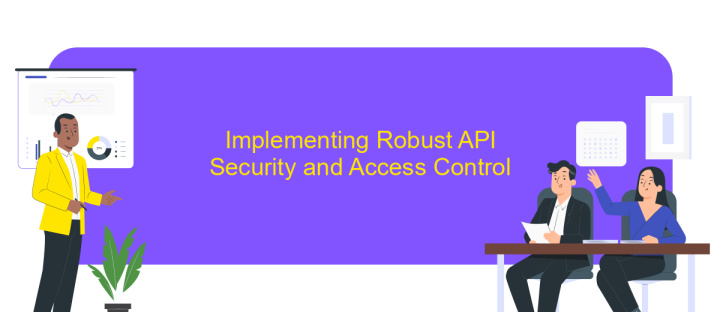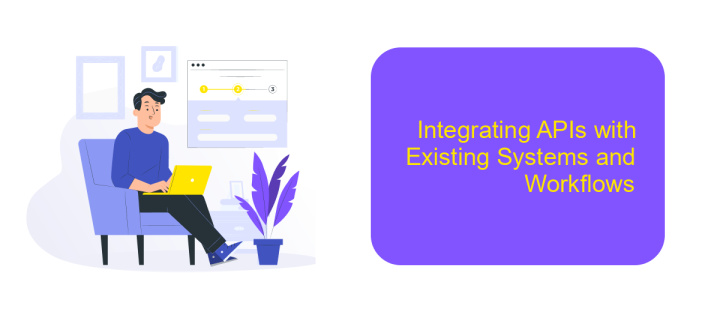Custom Enterprise API Development and API Integration
In today's rapidly evolving digital landscape, custom enterprise API development and integration have become essential for businesses seeking to enhance connectivity, streamline operations, and drive innovation. Tailored APIs enable seamless communication between disparate systems, fostering agility and scalability. This article explores the significance of custom API solutions, their role in optimizing business processes, and how they can unlock new opportunities for growth and efficiency in the enterprise environment.
Understanding the Business Needs and Defining API Objectives
Understanding the business needs is crucial in custom enterprise API development. It involves analyzing the specific requirements and challenges of the organization to ensure the API aligns with strategic goals. This process requires collaboration with stakeholders to gather insights into the desired outcomes and functionalities. By comprehensively understanding the business context, developers can create APIs that enhance operational efficiency and drive innovation.
- Identify key business processes that require API integration.
- Determine the target audience and their specific needs.
- Assess existing systems and data flows to ensure compatibility.
- Define clear objectives and success metrics for the API.
- Consider scalability and future expansion possibilities.
Defining API objectives is a strategic step that ensures the API delivers tangible value. Objectives should be specific, measurable, achievable, relevant, and time-bound (SMART). This clarity helps guide the development process and provides a benchmark for evaluating success. By aligning API objectives with business goals, organizations can maximize the impact of their digital initiatives and foster seamless integration across platforms.
Designing and Developing Custom APIs

Designing custom APIs requires a thorough understanding of the specific needs and goals of the enterprise. The process begins with identifying the core functionalities that the API must support, ensuring that it aligns with the business objectives. It's essential to engage stakeholders from various departments to gather comprehensive requirements. Once the requirements are clear, the next step is to create a detailed API specification. This includes defining endpoints, request/response formats, authentication methods, and error handling mechanisms. Choosing the right technology stack and development tools is crucial, as it impacts the API's performance and scalability.
Developing custom APIs involves iterative coding and testing. It’s important to implement best practices such as RESTful design principles, ensuring that the API is intuitive and easy to use. Thorough documentation is essential for both developers and users to understand the API’s capabilities. Integration tools like ApiX-Drive can facilitate seamless connectivity between the custom API and other enterprise systems, enhancing automation and data flow. Continuous monitoring and versioning are necessary to maintain the API's reliability and accommodate future enhancements. By focusing on these aspects, businesses can create robust and scalable APIs tailored to their unique requirements.
Implementing Robust API Security and Access Control

Ensuring robust API security and access control is critical in safeguarding sensitive data and maintaining the integrity of enterprise systems. Implementing comprehensive security measures not only protects against unauthorized access but also ensures compliance with industry standards and regulations. To achieve this, developers must integrate multiple layers of security strategies tailored to the specific needs of the enterprise.
- Authentication: Implement strong authentication mechanisms such as OAuth 2.0 or API keys to verify the identity of users and applications accessing the API.
- Authorization: Define and enforce granular access control policies to ensure that users have the appropriate permissions for the resources they need.
- Encryption: Use TLS/SSL to encrypt data in transit, and consider encrypting sensitive data at rest to protect against data breaches.
- Rate Limiting: Implement rate limiting to prevent abuse and ensure fair usage of API resources by setting limits on the number of requests a user can make.
- Monitoring and Logging: Continuously monitor API activity and maintain detailed logs to detect and respond to suspicious activities promptly.
By adopting these security practices, enterprises can significantly reduce the risk of data breaches and unauthorized access. A proactive approach to API security not only protects valuable assets but also builds trust with users and stakeholders, fostering a secure and reliable digital environment.
Integrating APIs with Existing Systems and Workflows

Integrating APIs with existing systems and workflows is a critical step in enhancing operational efficiency and ensuring seamless data flow. It involves aligning the new API capabilities with the current infrastructure, which may include legacy systems, databases, and various software applications. This process requires a strategic approach to minimize disruptions and maximize the benefits of the integration.
To achieve successful API integration, organizations must first assess their current systems and workflows to identify potential integration points. Understanding the architecture and data flow of existing systems is essential to determine how the new API can complement and enhance current operations. This assessment helps in identifying any potential challenges or conflicts that may arise during the integration process.
- Conduct a thorough system analysis to understand existing workflows.
- Identify key integration points for seamless data exchange.
- Ensure compatibility between the API and existing systems.
- Develop a comprehensive integration plan with clear objectives.
Once the integration plan is in place, it's crucial to test the API thoroughly within the existing environment. This testing phase should focus on verifying data accuracy, system compatibility, and overall performance. By addressing any issues during testing, organizations can ensure a smooth transition and leverage the full potential of the integrated API to drive business growth.
- Automate the work of an online store or landing
- Empower through integration
- Don't spend money on programmers and integrators
- Save time by automating routine tasks
Testing, Deployment, and Ongoing Maintenance of APIs
Testing is a critical phase in the lifecycle of API development, ensuring that APIs function as intended and meet business requirements. Comprehensive testing involves unit tests, integration tests, and end-to-end tests to verify the API's reliability, performance, and security. Automated testing tools can streamline this process, allowing developers to quickly identify and resolve issues. Additionally, utilizing platforms like ApiX-Drive can facilitate seamless integration testing by simulating real-world scenarios, ensuring that APIs communicate effectively with other systems.
Once testing is complete, deployment involves moving the API from a development environment to production. This process should be carefully managed to minimize downtime and ensure a smooth transition. Continuous integration and deployment (CI/CD) pipelines can automate the deployment process, making it more efficient and reliable. After deployment, ongoing maintenance is essential to address any issues, update features, and ensure security. Regular monitoring and logging can help identify potential problems early, allowing for prompt resolution. Utilizing integration services like ApiX-Drive can simplify ongoing maintenance by providing tools for monitoring and managing API interactions efficiently.
FAQ
What is Custom Enterprise API Development?
How does API Integration benefit a business?
What are the key considerations when developing a custom API?
How can businesses ensure successful API Integration?
What challenges might arise during API Development and Integration?
Do you want to achieve your goals in business, career and life faster and better? Do it with ApiX-Drive – a tool that will remove a significant part of the routine from workflows and free up additional time to achieve your goals. Test the capabilities of Apix-Drive for free – see for yourself the effectiveness of the tool.


